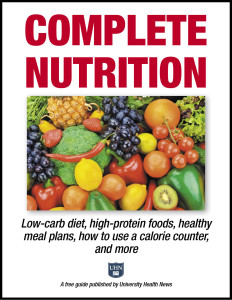Just Breathe: How to Use Breathing Exercises to Lower Blood Pressure
Close your eyes and sit up straight. Take a deep breath while you count to five, then count to five again as you exhale. Go ahead and try it right now for six breaths.
It feels good, doesn’t it? Here’s what just happened. First, you began to calm your sympathetic nervous system and your fight-or-flight response, which lowered feelings of stress.[1] You also began to increase blood flow to your body’s tissues, which reduced resistance in your blood vessels and increased your exercise tolerance. Your diaphragm moved up and down, which facilitated blood flow towards the heart.[2] Because of all of that, you started to lower your blood pressure.
A study in 2005 showed that simply taking 6 deep breaths in a period of 30 seconds reduced systolic blood pressure by 3.4 to 3.9 units compared to just sitting quietly.[3] These results are consistent with a long line of evidence suggesting that deep breathing can lower blood pressure.[4]
Eat Right, Starting Now!
Download this expert FREE guide, Complete Nutrition: Low-carb diet, high-protein foods, healthy meal plans, how to use a calorie counter, and more.
Create healthy meal plans and discover the Superfoods that can transform your plate into a passport to better health.
How to Do Breathing Exercises to Lower Blood Pressure
- Find a comfortable, quiet place. Sit up straight or try lying down to promote deep breathing.
- Practice diaphragmatic breathing. For breathing exercises to be effective, you must use the diaphragm to take deep breaths. When inhaling, you should feel your abdomen expand (place one hand on your stomach to monitor this movement). Try breathing in through your nose and out through your mouth.
- Try to exhale for 5 seconds and inhale for 5 seconds. That would be six breaths per minute. The goal is to reach a rate of 10 or fewer breaths per minute.
- Download a breathing app, such as My Calm Beat, to set your desired breathing rate. The app will chime when it is time to breath in and out.
- Spend five to 15 minutes a day practicing your breathing.
High-Tech Breathing Techniques to Lower Blood Pressure
High-tech devices are available to guide breathing and help users take fewer than 10 breaths per minute. The device plays musical tones to tell the user when to inhale and exhale, and straps around the torso to measure the user’s breathing patterns. Researchers found that using this device for 5 minutes at least three to four times per week decreases resting blood pressure in hypertensive patients.[5,6] While evidence for the short-term benefits of device-guided breathing is quite strong, it is not yet known whether or not this treatment can hold a long-term effect on blood pressure.[6]
In addition to maintaining a healthy diet, eating foods that help lower blood pressure, and exercising regularly, taking time out of your day to breathe deeply can help lower blood pressure and make you feel relaxed and revitalized, too.
Share Your Experience
Have you ever tried deep breathing exercises to help lower blood pressure? What other strategies have you tried to lower blood pressure naturally? Share your thoughts in the comments section below.
Originally published in 2016, this post has been updated.
[1] Hypertension. 2013 Jun;61(6):1360-83.
[2] Cardiol Rev. 2011 Mar-Apr;19(2):47-51.
[3] Hypertens Res. 2005 Jun;28(6):499-504.
[4] Indian J Med Res. 2013 May;137(5):916-21.
[5] J Hum Hypertens. 2010 Dec;24(12):807-13.
[6] J Hypertens. 2013 Apr;31(4):739-46.
The post Just Breathe: How to Use Breathing Exercises to Lower Blood Pressure appeared first on University Health News.
Read Original Article: Just Breathe: How to Use Breathing Exercises to Lower Blood Pressure »
Powered by WPeMatico


